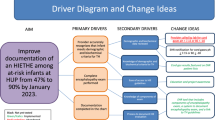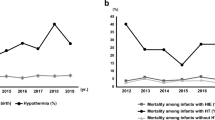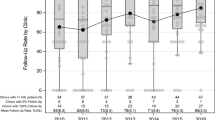Abstract
Objectives
To investigate racial disparities in the prevalence, severity, intervention, and outcomes of hypoxic-ischemic encephalopathy (HIE) among neonates in the United States.
Study design
We analyzed data from the National Inpatient Sample (NIS) dataset, including full-term infants diagnosed with HIE from 2010 to 2018. Regression analysis was performed to control for clinical and demographic variables.
Results
Out of 31,249,100 infants, 23,475 (0.09%) were diagnosed with HIE. African American neonates had a 60% higher likelihood of developing HIE compared to Caucasians, adjusted odds ratio (aOR) 1.60 (1.52–1.69, p < 0.001), and were twice as likely to experience severe HIE, aOR 2.06 (1.77–2.39, p < 0.001). Overall mortality was significantly higher among African American infants, aOR 2.14, (2.02–2.26, p < 0.001). Mortality within HIE infants did not differ between African American and Caucasian infants aOR 0.88 (0.78–1.0), p < 0.61. Native American infants had a significantly lower chance of receiving hypothermia therapy compared to Caucasian infants, aOR 0.48 (0.29–0.77), p = 0.002.
Conclusion
Racial disparity exists in the prevalence, severity, and management of HIE. African Americans experience a higher prevalence and severity of HIE. Native Americans are less likely to receive hypothermia therapy for HIE.
This is a preview of subscription content, access via your institution
Access options
Subscribe to this journal
Receive 12 print issues and online access
269,00 € per year
only 22,42 € per issue
Buy this article
- Purchase on SpringerLink
- Instant access to full article PDF
Prices may be subject to local taxes which are calculated during checkout
Similar content being viewed by others
Data availability
All data generated or analyzed during this study are included in this published article.
References
Shipley L, Gale C, Sharkey D. Trends in the incidence and management of hypoxic-ischemic encephalopathy in the therapeutic hypothermia era: a national population study. Arch Dis Child Fetal Neonatal Ed. 2021;106:529–34.
Ambalavanan N, Shankaran S, Laptook AR, Carper BA, Das A, Carlo WA, et al. Early determination of prognosis in neonatal moderate or severe hypoxic-ischemic encephalopathy. Pediatrics. 2021;147:e2020048678.
El-Dib M, Inder TE, Chalak LF, Massaro AN, Thoresen M, Gunn AJ. Should therapeutic hypothermia be offered to babies with mild neonatal encephalopathy in the first 6 h after birth? Pediatr Res. 2019;85:442–8.
Chalak LF, Nguyen KA, Prempunpong C, Heyne R, Thayyil S, Shankaran S, et al. Prospective research in infants with mild encephalopathy identified in the first six hours of life: neurodevelopmental outcomes at 18-22 months. Pediatr Res. 2018;84:861–8.
Finder M, Boylan GB, Twomey D, Ahearne C, Murray DM, Hallberg B. Two-Year Neurodevelopmental Outcomes After Mild Hypoxic Ischemic Encephalopathy in the Era of Therapeutic Hypothermia. JAMA Pediatr. 2020;174:48–55.
Bradfield WD, Cox S, Handerson Z. Disparities in neonatal intensive care: Context matters. Pediatrics. 2019;144:e20191688.
Boghossian NS, Geraci M, Edwards EM, et al. Changes in hospital quality at hospitals serving black and Hispanic newborns below 30 weeks gestation. J Perinatol. 2022;42:187–94.
Giurgescu C, Banks A, Dancy BL, Norr K. African American women’s views of factors impacting preterm birth. MCN Am J Matern Child Nurs. 2013;38:229–34.
Boghossian NS, Geraci M, Lorch SA, Phibbs CS, Edwards EM, Horbar JD. Racial and ethnic differences over time in outcomes of infants born less than 30 weeks gestation. Pediatr. 2019;144:e20191106.
HCUP: hcup-us.ahqr.gov/kidoverview.jsp#structure accessed on 01/31/2024
Silveira RC, Procianoy RS. Hypothermia therapy for newborns with hypoxic-ischemic encephalopathy. J Pediatr. 2015;91:78–83.
Parker SJ, Kuzniewicz M, Niki H, Wu YW. Antenatal and intrapartum risk factors for hypoxic-ischemic encephalopathy in a US Birth Cohort. J Pediatr. 2018;203:163–9.
Janevic T, Zeitlin J, Auger N, Egorova NN, Hebert P, Balbierz A, et al. Association of race/ethnicity with very preterm neonatal morbidities. JAMA Pediatr. 2018;172:1061–9.
Willis E, McManus P, Magallanes N, Johnson S, Majnik A. Conquering racial disparities in perinatal outcomes. Clin Perinatol. 2014;41:847–75.
Wallace M, Crear-Perry J, Richardson L, Tarver M, Theall K. Separate and unequal: structural racism and infant mortality in the US. Health Place. 2017;45:140–4.
Macdorman MF, Mathews TJ. Understanding racial and ethnic disparities in the US. Infant mortality rates. NCHS Data Brief. 2011;74:1–8.
Sutton MY, Anachebe NF, Lee R, Skanes H. Racial and ethnic disparities in reproductive health services and outcomes. Obstet Gynecol. 2021;137:225–33.
Wang Y, Xu Y, Zhou C, Cheng Y, Qiao N, Shang Q, et al. Exome sequencing reveals genetic heterogeneity and clinically actionable findings in children with cerebral palsy. Nat Med. 2024;30:1395–405.
Morell AS, Monsell SE, Cornet MC, Wisnowski JL, McKinstry RC, Mathur AM, et al. Genetic and congenital anomalies in infants with hypoxic-ischemic encephalopathy. Pediatr Neurol. 2024;154:44–50.
Author information
Authors and Affiliations
Contributions
Drs. Elgendy, Cortez, and Acun conceptualized and designed the study, interpreted the statistical analyses, drafted the initial manuscript, reviewed and revised the manuscript and critically reviewed the manuscript for important intellectual content. Dr. Aly conceptualized and designed the study, interpreted the statistical analyses, reviewed and revised the manuscript, and critically reviewed the manuscript for important intellectual content. Dr. Mohamed conceptualized and designed the study, conducted the statistical analyses, edited and revised the initial manuscript, reviewed and revised the manuscript and critically reviewed the manuscript for important intellectual content. All authors approved the final manuscript as submitted and agreed to be accountable for all aspects of the work.
Corresponding author
Ethics declarations
Competing interests
The authors declare no competing interests.
Additional information
Publisher’s note Springer Nature remains neutral with regard to jurisdictional claims in published maps and institutional affiliations.
Rights and permissions
Springer Nature or its licensor (e.g. a society or other partner) holds exclusive rights to this article under a publishing agreement with the author(s) or other rightsholder(s); author self-archiving of the accepted manuscript version of this article is solely governed by the terms of such publishing agreement and applicable law.
About this article
Cite this article
Elgendy, M.M., Acun, C., Cortez, J. et al. Racial disparities and outcomes in neonatal hypoxic-ischemic encephalopathy. J Perinatol (2025). https://doi.org/10.1038/s41372-025-02335-9
Received:
Revised:
Accepted:
Published:
DOI: https://doi.org/10.1038/s41372-025-02335-9



